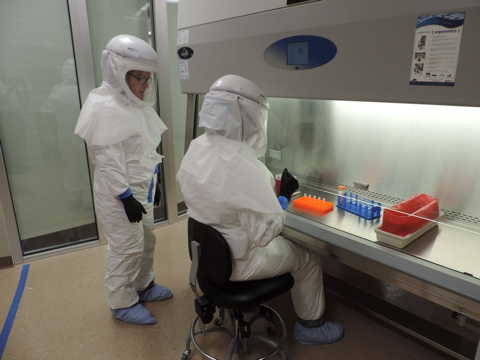Biosafety is often defined as the discipline of addressing the safe handling and containment of diverse hazardous biological materials and infectious microorganisms. The practice of safe handling of pathogenic micro-organisms and their toxins in the biological laboratory is generally accomplished with the help of the application of risk assessment and containment principles. There are many people who work in the domain of Biosafety, Martin Sanders being one of them. He is a Public Health Professional and an alumnus of the University of California, Davis. Martin additionally obtained his doctorate from the Department of Immunology and Infectious Diseases at the Johns Hopkins University School of Hygiene and Public Health in 1997.
Biosafety training and risk assessment are vital to ensuring public safety and health. While one might believe that their lab follows all the needed guidelines and protocols, biosafety experts can aid in filling in the gaps and optimizing efficiency and productivity. The two biggest factors that come into the forefront when it comes to biosafety are containment and risk assessment. By opting to combine these two measures, people can prevent exposure to those working in the lab and even present outside it. There are three key factors one needs to take care of in terms of containment, which includes lab practices, safety equipment and facility/lab design. The containment is either secondary or primary within the lab. Primary containment tends to be designed for the purpose of protecting people within the lab from exposure. This might include enclosed containers, fume hoods, biological safety cabinets and more.
Personal protective equipment such as masks or gloves can also fall into this category. Secondary containment tends to prevent pathogens and hazards from escaping the lab and subsequently exposing them outside. The architecture and design of the building and lab are known to be pretty crucial for secondary containment. This can include airlocks, hand washing stations and ventilation systems.
Biological risk management typically centers on a particular facility and is specific to the materials it is working with. Proper risk management will not only consider the biological agent, but also determine the potential impact of certain activities. People may end up discovering certain aspects of their lab that might increase the likelihood of exposure in this process, providing people with a chance to resolve an issue before it causes major harm. One will never want to assume that the biosafety practices of their facility are up to par. They must try to get an assurance that these practices are comprehensive and effective. Biosafety training goes a long way in ensuring people that their team is properly handling infectious organisms and hazardous biological materials.
Experienced professionals like Martin Sanders tend to be well-acquainted with the important intricacies linked with biosafety training and risk assessment. He had received certification from the American Biological Safety Association as both a biological safety professional and registered biosafety professional. Throughout his career, he had been deeply involved in biosafety and biosecurity issues both in the United States and abroad.







